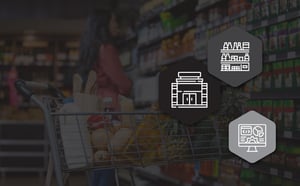Consistent product availability is the essence of a positive shopping experience and the backbone that ensures a secure income stream and loyal customers. By failing to provide the right products at the right time and price, you can lose business to your direct competitors. One reason behind this should be apparent - you fail to offer the experiences that customers want.
That's not the only reason why. When you fail to provide for your customers, your reputation suffers. If you can't or don't stock a product range that meets the needs of shoppers, how can you expect them to return? The short answer is they won't. That speaks to the severity of this issue and how critical it is to avoid it if possible. If you already struggle, it’s time to correct it.
Fortunately, there are actions you can take. One step to take is to do this alone - analyze your data and understand which products sell so you can stock more of them. It's time-intensive if you use something other than specialist software to assist you. We recommend you use specialized software. However, perhaps you don't have the necessary time or resources. In that case, we recommend our professional services.
What is product availability?
Before we get into how you can use product availability to improve the customer experience, it's first worth unpacking what it is. It's also worth considering it from a retailer and supplier perspective.
Product availability and retailers
From this perspective, consistent product availability comes down to providing the right products to meet consumer demand. You want to offer these products because it leads to increased revenue and profitability.
That's what you get from this, which is motivation enough. Another reason speaks to the heart of this article - better customer experiences.
Product availability and suppliers
As a supplier, product availability refers to how much stock you provide and how well your brand fulfills shopper needs in retail stores. When done right, you can motivate shoppers to switch their brand loyalties to you so they only buy your products no matter where they shop.
That strengthens your position with your retailer client, and you can use this if you want to negotiate for more shelf space.
As for why you must look after product availability, let us consider your average customer.
Your customers prefer to complete all their purchases in one store if possible. Research conducted by the Stanford Graduate School of Business found it benefitted customers, with one primary finding being that it was more cost-effective.
Besides the lower cost of shopping at one store, as found in the above research, it helps that you can meet all their wants and needs in one store. That means less hassle for them and more convenience.
When shoppers visit your store, they expect full shelves with various product options. By doing that consistently, not only do you keep customers happy, but you can also create long-term customer loyalty.
What are the consequences of low product availability?
1. It leads to stockouts
One of the first consequences of low product availability is one that we have already mentioned briefly: stockouts and empty shelves.
There are many reasons why stockouts occur.
- Inadequate forecasting;
- Underestimating the demand for a product;
- Low levels of safety stock; and
- Underordering.
To avoid that, you must align demand with the product ranges and the stock availability. If demand rises for specific lines, so should the stock availability for that product. What happens if you fail to provide sufficient stock - especially with more seasonal products? You lose customers.
You can also turn to category management and forecasting to help understand the rise and decline in demand.
2. It frustrates and angers your customers
Low product availability also leads to frustrated and angry customers and creates a negative shopping experience. It can result in customers not returning to your store out of fear of having another negative shopping experience. And you can't blame them.
Not having the right products or stock means your shelves are empty or overstocked with the wrong items. You can't customers can't satisfy their needs. It forces them to buy a substitute product (if they are loyal shoppers) or visit your direct competitor instead.
This will inevitably lead to a negative store perception. It can also influence customers not to support you as you become known for not looking after their needs. Do that often enough, and the reputation will stick.
3. It leads to an unnecessary loss of sales
Your store sales will plummet if the desired product ranges and stock aren't in stock.
As mentioned above, you'll create a negative connotation if you run out of stock and cannot meet customer needs. It negatively impacts your sales since fewer customers will support you due to previous experiences or word of mouth from their peers.
One of your goals is to keep customers in your store for as long as possible. Doing so exposes shoppers to more of your merchandise, which increases their shopping basket value.
How can you expect to keep shoppers in your store for long periods if you don't provide them with the products they want in the right quantities? The flip side is you can also lose substantial money and profit if you have incorrect product forecasting.
After all, it's not enough to have full shelves. You'll just as likely lose money if you stock the wrong products. It leads to a loss on return on investment since you sit with dead stock as customers don’t want to buy.
4. It impacts the relationship between retailers and suppliers
While low product availability can have a detrimental effect on you as a retailer, it can have just as much of an impact on you if you are a supplier. We've mentioned that above.
And then there is the impact it has on retailer-supplier relationships.
For example, you can lose sales as a supplier when you fail to provide an adequate product range. It also motivates customers to try a different brand instead, which can, in turn, cause your retail client to lose sales and encourage a customer to reach for the new brand on the next shopping trip.
What's more, your retail clients will also lose faith in you as a supplier because they can't rely on you to provide the stock they require to meet the needs of their customers. It forces their hand to look for other suppliers. And what relationship you might have had with them could be irreparable. But you can't blame them.
Another scenario that can be detrimental to the retailer-supplier relationship is if you fail to provide stock to your retail client. A justified response could be your retail client taking away shelf or floor space reserved for your product and allocating it to another brand with a more extensive range. But again, you cannot blame them.
If you have undertaken category management, it can be just as devastating if you have a poor relationship with your retail client. If you are unsure you could provide enough stock, why would your retail client want to implement any planograms you build?
How do you ensure consistent product availability using DotActiv software?
With consistent product availability, there are two approaches you can take - go with assortment planning or planogram development.
However, if consistent product availability is a priority in your category management efforts, you might need to consider an all-inclusive approach - combining assortment planning and planogram development.
For the best result, you can’t have one without the other.
1. Using DotActiv software to ensure consistent product availability
Fortunately, the DotActiv software has various analytical tools to help you review your product range and optimize your shelf space. This way, you will always have the right product available at the right time.
For example, Range Optimizer is a fully customizable DotActiv software feature that helps you review your product ranges.
All you have to do is to set up the Range Optimizer feature to consider the needs of your category and decide how you want to allocate points to each product in your range according to your category's KPIs.
The results grid shows you your analyzed product range. In the Total Points column, you see the money-makers highlighted in green and the loss-makers in red. Even so, you have the last say. You decide which products you want to keep and which ones you want to discard by checking or unchecking the boxes in the Range Suggestion column.
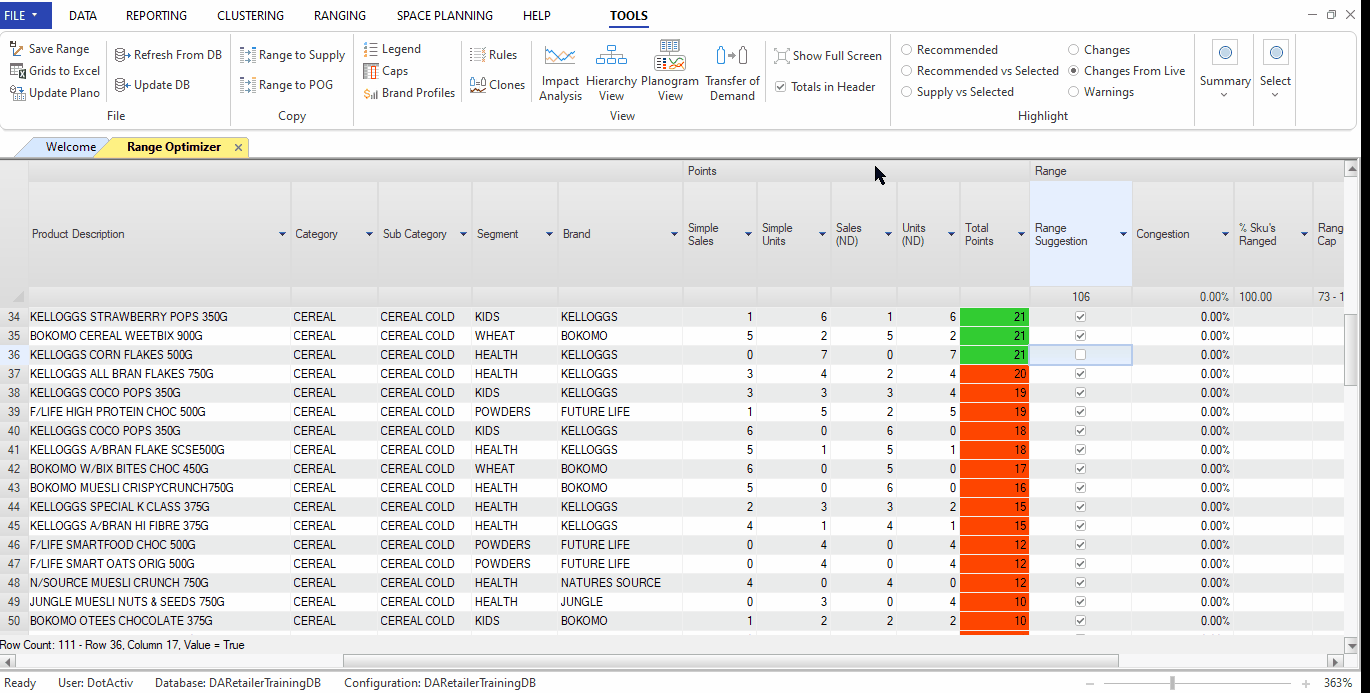
After you’ve reviewed and handpicked your product range, it’s time to get even further into the details.
Planogram Development is the bread and butter of category management. We use planograms for sales maximization, visual merchandising, and stock management, among other things. But for consistent product availability, let’s focus on how planograms, and the DotActiv software, assist your stock management efforts.
A common rule of thumb when building a planogram is to balance days of supply (DOS).
Days of supply refers to how many days it takes for the stock on the shelf to run out if sales continue at the same rate as recent sales.
With DotActiv software’s floating status tool, you can balance your DOS per product, allowing you to open up on products with a lower DOS than your category target and close on products with a higher DOS. This feature is so convenient that the DOS per product changes as you open and close on facings.
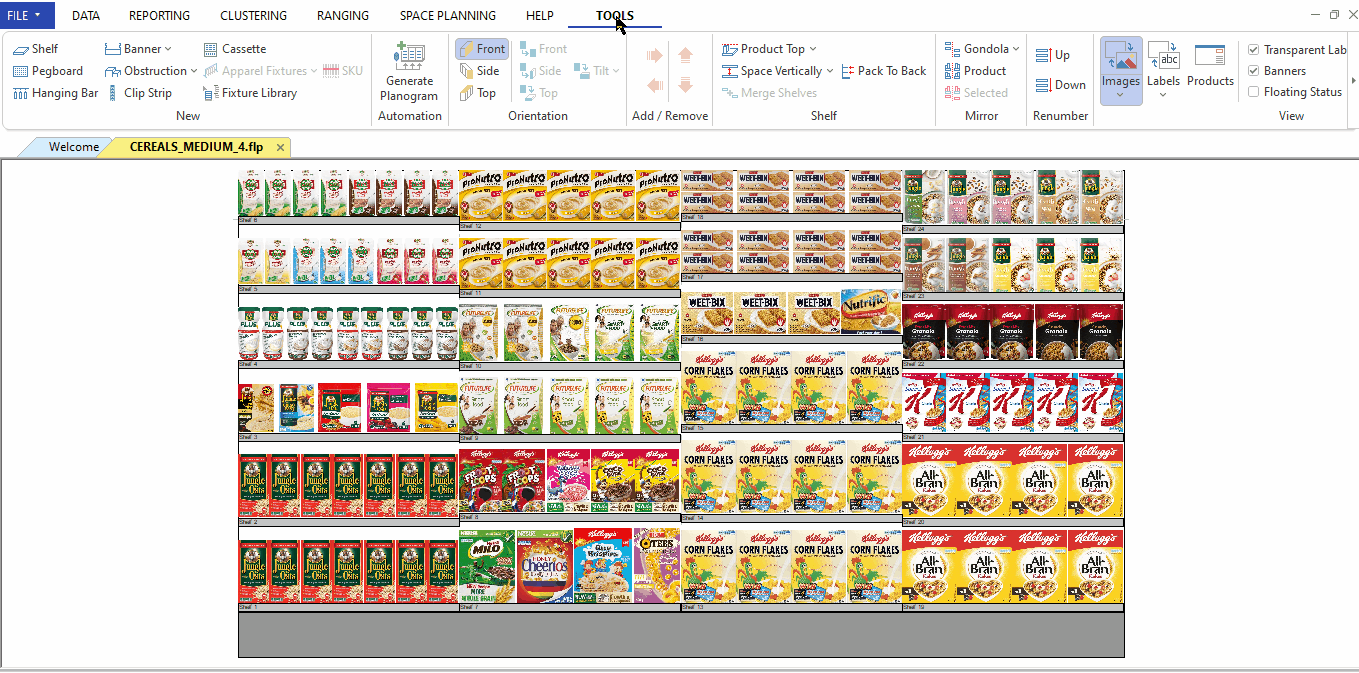
When your days of supply balances to the category target, your stock management becomes more efficient:
- Stores can order the right products in the right amounts and minimize back orders and overstock.
- Your staff spends less time on shelf replenishment as products are merchandised on the shelf to replenish on the same day.
When enough stock is available in-store and on the shelf at the right time, congratulations, you have achieved consistent product availability.
However, this can only happen efficiently with two-way integration. Retail is a fast-moving environment, and a two-way integration system helps everyone keep up with the pace. There will be quicker lead times, and everyone can access the correct information when needed.
2. Diagnosing product availability issues with DotActiv software
Now, we know that we can use the floating status tool to help us determine the days of supply per product as we change a planogram. But what else does the DotActiv software have to offer?
The planogram analyzer is a nifty tool to identify whether or not you have successfully utilized days of supply on your planogram. This DotActiv software feature gives you a high-level overview of what is happening on your planogram and helps you ensure consistent product availability.
Like many of the DotActiv software features, the planogram analyzer is customizable. You can add and remove fields to suit your needs. We recommend adding the DOS alignment and DOS fields in the analyzer setup menu under KPI for consistent product availability.
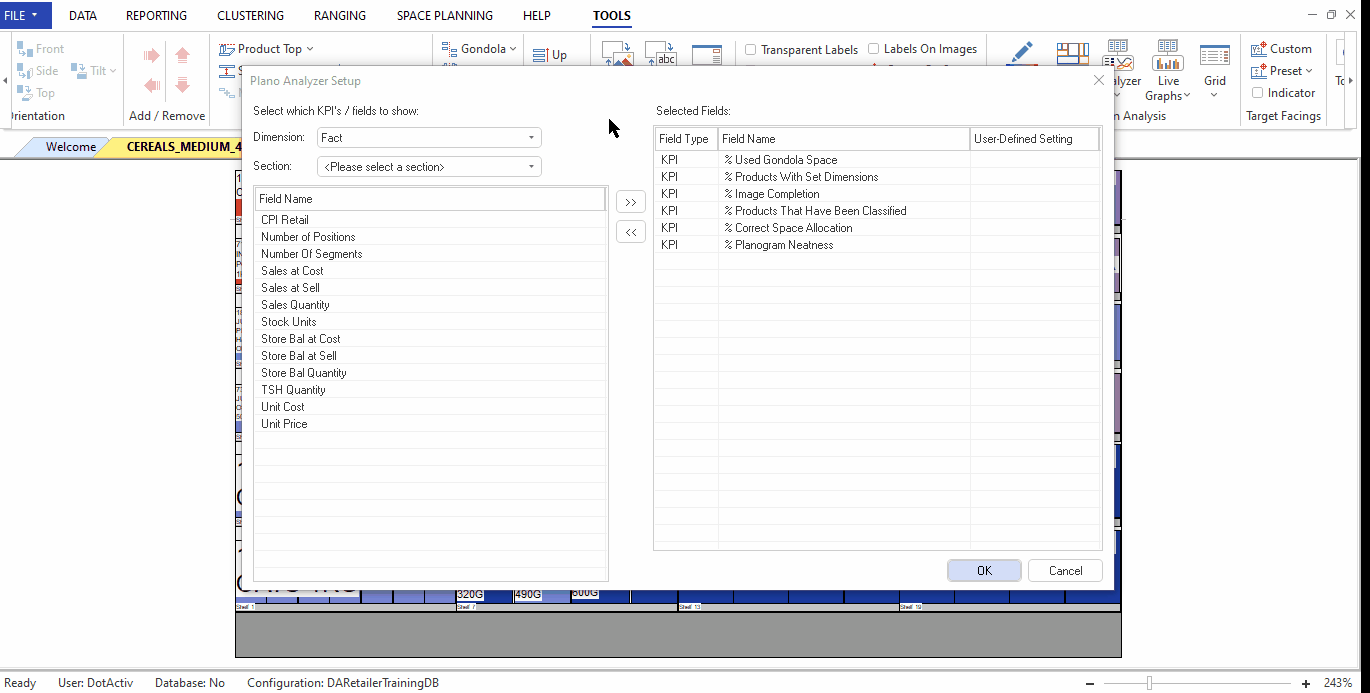
With this feature, you determine whether the overall days of supply coincide with the target for your category. If not, you need to relook the space allocated to each product.
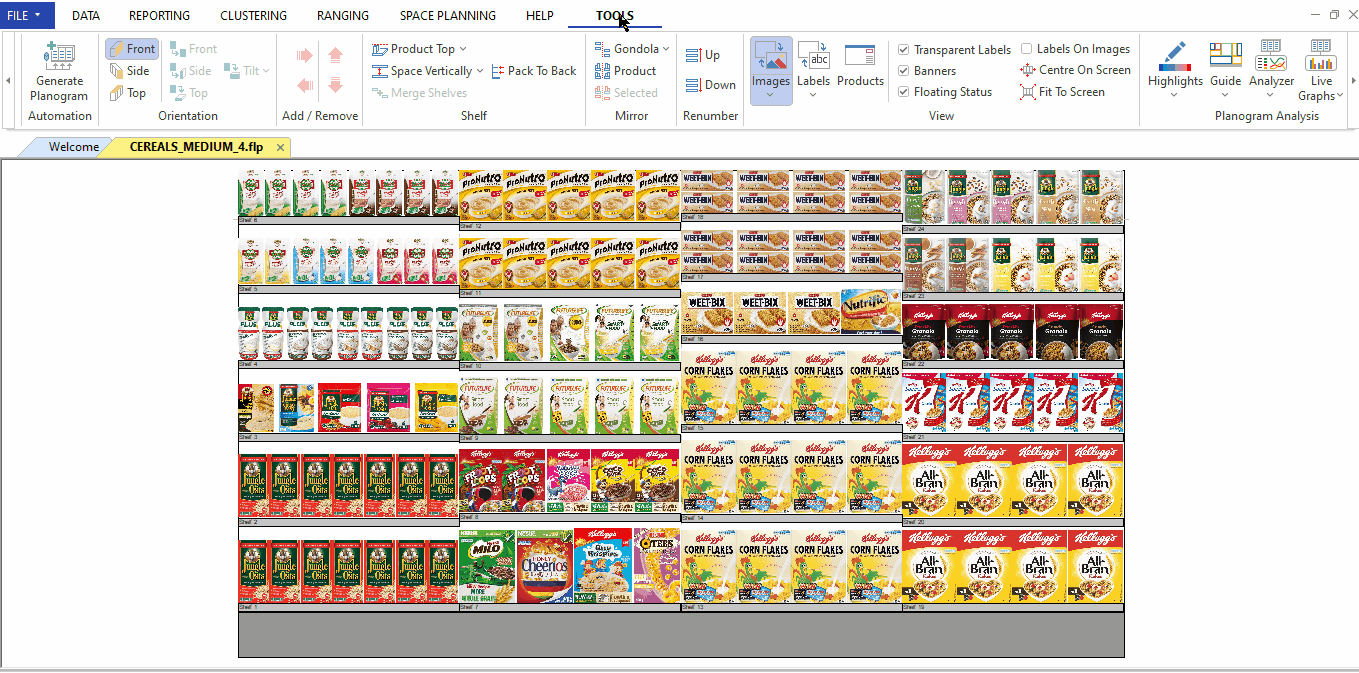
3. Delivering impact with DotActiv's Category Management service
As previously mentioned, an all-inclusive approach to consistent product availability is vital. Instead of only choosing assortment planning or planogram development is best to combine them
DotActiv's all-in-one category planning service does just that. Besides assortment planning and planogram development, it also includes cluster optimization and floor space optimization.
Our trained category specialists know how to optimize assortments and build planograms inside out. They follow a meticulous process to ensure nothing goes unseen and use our software with their category knowledge to provide you with quality and expert advice.
At DotActiv, we focus on determining the optimal range by looking at customer demands and curating shelf displays that ensure the customer gets what they want. This way, you avoid inconsistent product availability and frustrated customers and gain a competitive advantage without lifting a finger.
Consumer demands are ever-changing, and you must keep up to see a return on investment. Never underestimate the importance of monitoring seasonal trends and consistently adapting to consumer demands.
Consistent product availability is indispensable. Without it, you will lose out on sales, and your reputation suffers. Fortunately, our category specialists know how to avoid this.
Conclusion
Consistent product availability is the essence that makes your retail business successful since it provides the structure for you to merchandise and attracts your target market by providing the products they require to fulfil their needs.
Are you searching for advice or need a category management solution to help you with both? Book a free consultation with a DotActiv expert today, and we’ll show you how we can help you achieve this and more. You can also browse our various software editions and services on our online store.


